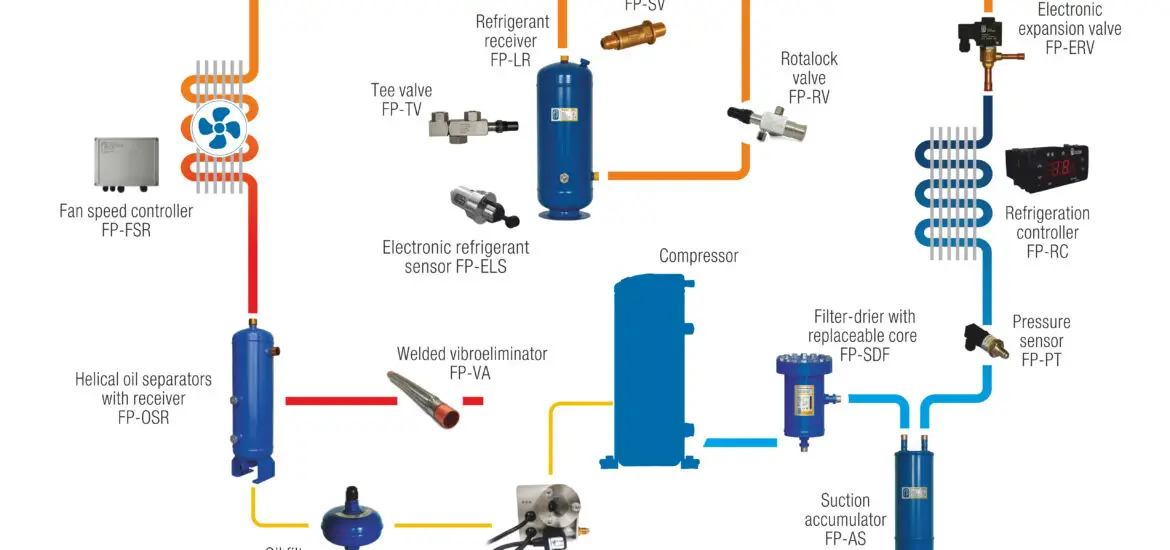Understanding “electronic expansion valve types” can seem like a daunting task, especially when you are new to the field. However, with the right guide, you can become proficient in no time. In this detailed walkthrough, we will dissect the various electronic expansion valve types step by step, easing your path to mastery.

Table of Contents
What Are Electronic Expansion Valve Types?
Electronic expansion valves play a pivotal role in regulating the flow of refrigerant in air conditioning and refrigeration systems. These valves are known for their precise control and efficiency, a reason they are preferred over other valve types. Essentially, there are two prominent electronic expansion valve types that are generally categorized based on their functioning mechanism: the pulse width modulation valves and the step motor valves.
The Different Electronic Expansion Valve Types
In the realm of refrigeration and air conditioning systems, choosing the right electronic expansion valve is pivotal. Let’s break down the two primary electronic expansion valve types in detail:
Pulse Width Modulation (PWM) Valves
These are electronically controlled valves that regulate the refrigerant’s flow within a system through a pulsating mechanism.
The valve’s opening duration, known as the “duty cycle,” is altered to control the amount of refrigerant passing through. The cycle’s frequency can be modulated to achieve precise control over the refrigerant flow, thus optimizing the system’s performance.
It is vital to note that these valves are highly efficient and offer significant energy savings, making them a popular choice in modern cooling systems.
Step Motor Valves
These valves are controlled by a step motor, which precisely adjusts the valve opening in fine increments, allowing for a more continuous and smooth refrigerant flow. The motor’s rotation is translated into a linear movement, which in turn modulates the valve opening, ensuring optimal refrigeration control.
Due to their fine control, these valves are ideal for systems requiring steady and consistent refrigerant flow, offering high precision and reliability in various applications including industrial refrigeration and high-performance air conditioning systems.
When choosing between these valve types, consider the specific requirements of your system to ensure it operates at peak efficiency. Understanding the technicalities and benefits of each valve type can guide you to make an informed decision.
Check out these other articles…
Function of Thermostatic Expansion Valve in Refrigeration System
TXV vs Piston: Which Metering Device Should You Choose?
Externally Equalized TXV: Your Ultimate Guide
Checking Superheat: The Definitive Step-by-Step Guide
Checking Superheat with TXV: In 5 Easy Steps
Installation Guide: Electronic Expansion Valve Types
Installing electronic expansion valves necessitates a meticulous approach. Here, we will go through the general steps to install these valves:
Choose the Right Valve Type: Based on your system requirements, choose either a PWM or a step motor valve.
Prepare the Installation Site: Ensure the site is clean and free from any debris.
Install the Valve: Position the valve correctly and secure it using the appropriate fittings and tools.
Connect to the Control System: Connect the valve to the control system to facilitate electronic functioning.
Test the System: After installation, run the system to ensure the valve is functioning correctly.
Seek professional assistance if you are unfamiliar with installation procedures to avoid mistakes and accidents.
Maintenance and Troubleshooting
Proper maintenance is vital to ensuring a long lifespan and optimal functioning of electronic expansion valves. Here, we offer you tips on maintenance and troubleshooting:
Regular Inspection: Conduct regular inspections to identify any issues early on.
Cleaning: Clean the valve periodically to prevent buildup and ensure smooth operation.
Troubleshooting: Sometimes, issues might be resolved by simply resetting the system or replacing a faulty component.
Always refer to the manufacturer’s manual for specific maintenance guidelines and troubleshooting tips for the particular valve type you are handling.